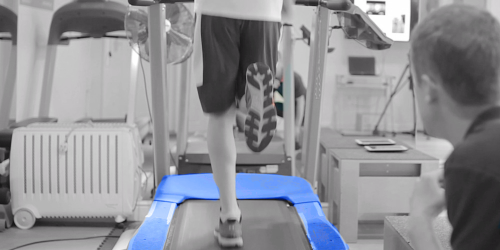No one should have to live with hip pain. The hip is the joint that attaches the leg to the torso of the body, it is designed to handle a fair amount of wear and tear, compared to the shoulder which is more susceptible to injury. However, it’s not indestructible. With age and trauma, the cartilage can wear down or become damaged. Hip pain can reside within the joint itself, or on the outside of your hip, which is usually caused by structures (like ligaments and muscles) surrounding the hip joint.
Common Causes & Symptoms of hip pain
-
Arthritis
If you’re suffering from long-term hip pain, there’s a chance that arthritis could be the culprit. According to this article on Everyday Health, “more than a quarter of older adults will develop arthritis hip pain.” Osteoarthritis is the most common type of arthritis, and it occurs when inflammation and injury to a joint leads to a breaking down of cartilage tissue. It’s also caused by a gradual wear and tear of the cartilage. Symptoms include stiffness or soreness in the hip area, pain in the thigh or groin area, difficulty bending your knee to your chest, and limping.
-
FAI
Femoroacetabular impingement (FAI) is when something interferes with the smooth and free movement of the ball-and-socket joint. This could be due to a deformity of the ball at the top of the femur, or a deformity of the socket. You might not feel much in the early stages, but you’ll start to feel pain as the condition progresses. Symptoms can include stiffness, pain in the hip and groin area after an activity, pain on prolonged sitting and limited motion in the hip. An accurate diagnosis is crucial as the condition can worsen and lead to osteoarthritis.
-
Labral Tear
A hip labral tear occurs when the band of cartilage surrounding the hip joint is injured. Athletes are most at risk of developing a hip labral tear. According to studies, up to 22% of athletes who complain of groin pain have a labral tear in the hip. Symptoms include a locking or clicking sensation in your hip, joint, soreness in your hip or groin, and pain during or after activity.
- Bursitis
Bursitis occurs when the fluid-filled sacs that cushions the bone and surrounding soft tissue (bursa) become inflamed. This inflammation can be caused by excessive friction, an injury, or a condition like rheumatoid arthritis. Bursitis is the most common cause of hip pain, and the symptoms include pain and tenderness in the hip, radiating pain outside of the lower hip, and fever and hip swelling in more severe cases.
How to diagnose hip pain
Remember, hips don’t lie – so if you’re experiencing pain, make sure to get it checked out immediately. Here’s how hip pain can be diagnosed:
- Physio assessment
A physiotherapist will be able to assess where the hip pain is coming from and whether it’s a muscular, hip joint, nerve, or biomechanics issue. Knowing where your hip pain comes from can prevent it from returning it in the future. They will also be able to advise if either of the following would help in the diagnosis of your problem
- X-ray
An X-ray is a simple imaging test that captures a two-dimensional image of the bones that form the joint. X-rays will be able to point out if you have arthritis in the hip, and will also be able to tell if there’s any erosion in the bones and any excess fluid in the joint.
- MRI Scan
MRI scans allow you to see more than an X-ray. They’re great for looking at the soft tissues around the hip (muscles and tendons), and they’re particularly useful for diagnosing conditions like bursitis and a labral tear.
Treatment options for hip pain
- Manual physiotherapy treatment
Manual physiotherapy is an effective physical therapy technique that can be helpful for the treatment of stiff joints in certain musculoskeletal conditions. Manual therapy can be helpful for people suffering from hip stiffness. Manual therapy includes soft tissue techniques and stretches and manipulative therapy that can help loosen tight tissues around a joint as well as the joint itself.
- Exercise rehabilitation
Exercise is one of the best things you can do to relieve pain and strengthen the muscles and joints that surround your hips, even if you suffer from arthritis. A physiotherapist will recommend a variety of low-impact exercises that will both strengthen the hip joint and increase the mobility.
- Surgery
Surgery could be required if osteoarthritis becomes too severe or the hip joint becomes deformed – a hip replacement is recommended in this case.. A hip replacement is one of the most common joint replacement surgeries. However we would always do everyting possible to avoid or delay this option.
Hip pain can affect every aspect of your life—it’s a condition that shouldn’t be ignored. If you’re suffering from hip pain, get treatment from Synergy Physio. We can provide full recovery and prevent the problem from returning. Book a free online consultation today.







